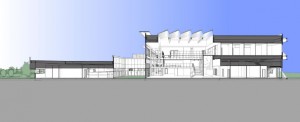The breadth of activities carried out by professional societies is truly impressive, from publishing and organising conferences to affecting physics education, science policy and public outreach. Most of us belong to a professional society that serves as a professional home in our county. I have belonged to the American Physical Society since I was a graduate student in Berkeley, and last year I had the privilege of serving as APS President for 2011. It has become customary for each outgoing APS President to summarise his or her presidential year for APS and I repeat my summary below.
APS President, 2011
Last year was a very good one for the APS. Our core activities have continued at a high level; our journals continue to be the leading journals in the world and our major meetings are well attended and have exciting scientific programs. The APS finances and membership are stable and growing; our programs in outreach, education, government relations and science policy are thriving. Overall, we can be proud that the APS is serving physics and the physics community very well.
Nevertheless, the future presents us with new challenges, and to meet them we are in the process of developing a new strategic plan for the APS. This plan will be brought to the broader membership in the coming months and will serve as a roadmap for the coming few years.
New programs or changes in emphasis for a large organization like the APS generally take longer than one presidential year. Therefore, an absolutely crucial aspect of successfully evolving the APS for the future is for the entire presidential-line and APS operating officers to work together on a set of common goals, and over a period of years. The strategic plan will formalize our goals for the next few years, but in fact, some important new initiatives are already under way.
Publishing is the largest APS activity, and, despite the rapid conversion to electronic publishing, we have outgrown the current editorial offices in Ridge, New York, as the journals have continued to expand. Based on projections of future space needs and after investigating possible options, we have decided to add a second story to the Ridge facility. The Executive Board and Council approved this expansion. We have developed an attractive design, employed an experienced contractor, and are now completing the last formalities, before beginning construction. The new Ridge facility should be completed by summer of 2013.
Another long-term issue that faces scientific publishing is how to approach the movement toward “open-access” journals. This is a very fluid situation and one where we must take the lead in order to ensure that whatever changes are instituted, we maintain the high quality of our journals and that they remain financially viable. We have taken an important step during the past year by introducing Physical Review X, a new online-only, open-access, author-pays interdisciplinary physics journal. We have appointed an outstanding editorial board for PRX and have established high standards for accepted articles. We are also in discussion with funding agencies, universities and other publishers about possibly carrying out a joint pilot program in open access, in order to gain more experience.
The second largest APS activity is our very successful set of scientific meetings. Again, looking toward the future, we plan to reevaluate the entire suite of meetings, as well as to modernize them by employing modern tools to post and/or live stream talks. We performed a pilot test program at the April meeting last spring, electronically posting talks from plenary sessions. The number of hits and downloads of those talks impressively demonstrated how this will extend the reach and importance of our meetings.
We are responding to the realization that we have a growing membership living outside the US, now over 20 percent. One step to serve this constituency better has been to increase non-US resident membership serving on the APS Council. Now we are working to increase the number of non-US resident participation serving on our standing APS committees. We are considering a variety of other ways to serve international members, for example in forming partnerships with foreign physical societies and holding meetings outside the US.
There is much more that I could report on the activities from last year, but I will end on a personal note. As a young physics graduate student I joined the APS and gave my first oral presentation at what was then the New York meeting. Throughout my career in physics, the APS served as my professional home and, in addition to presenting and publishing my research, it has provided me with opportunities to grow by participating in its broader activities. APS has served me well, and I am very happy to have had the opportunity to contribute to APS by serving as its President for 2011.




Barry: You have not changed a bit. Good to see that you are still at it. Got the artticle from Lubo. Let’s see if we can arrange for get togther wuth lubo and tell old stories. Be Well. Stan